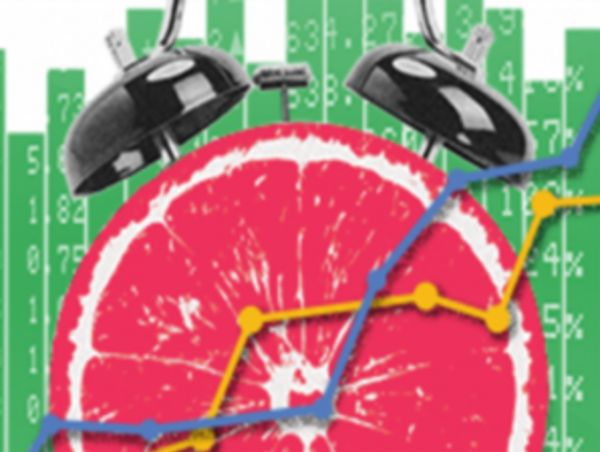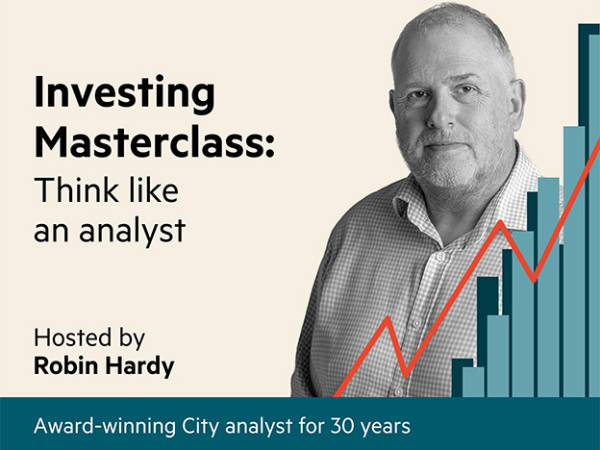Let’s start with a thought experiment. You have just bought shares in Unilever (ULVR) because its dividend payments seem as reliable as the best-known brands that the soaps and foods maker produces – not that exciting, but they do a job.
To get an idea of the income you might receive from the shares, you note down the dividends Unilever has paid in the past 10 years and discover – very conveniently – that, on average, the payout has grown by, as-near-as-dammit, 10 per cent a year. So, to get a rough-and-ready idea of what the future might bring, you make the very brave assumption that will be the pace at which dividends grow for the coming 10 years.
The result is shown in the top row of Table 1. Starting with a 200p per share dividend in 2022 – a 10 per cent uplift on what was paid in 2021 – the payout rises relentlessly to 472p by 2031. Aggregate the 10-years-worth of dividends and the amount is almost £32. That’s nice because it accounts for over 80 per cent of the per-share price you paid for your holding. So, after 10 years, you would have got back in dividends the bulk of what you paid and still have the right to a valuable stream of dividends stretching far out into the future.
But a little voice inside is nagging that it’s not so simple. Instinct tells you the £32 in aggregate isn’t really £32 – not in real, spendable money. Most obviously, the final payment of 472p per share isn’t due for 10 years, and who knows what might have happened by then to affect its value. In short, you cannot be sure what the stream of dividends will be worth and you don’t know how to estimate its value via a rigorous process.
Welcome to what might be the most important concept in all of investing, if not in all business – the notion that money to be received at some point in the future is worth less than money to be received today. To this, there is a corollary – there is an amount to be received in the future that will persuade you to save £x rather than to spend the money.
Formally, these matters group together under the heading The Time Value of Money. Its importance is permanent – after all, time value in effect gets a mention in the Talmud – but its profile is boosted whenever inflation stirs for the simple reason that almost nothing erodes the time value of money like inflation. To see why, let’s take a quick detour into interest rates, because they are indispensable to understanding time-value theory.
Rate expectations
Within every interest rate, theory assumes there is a real risk-free rate that persuades each person to save rather than to spend. ‘Real’ means the return takes account of inflation, and ‘risk-free’ means the return is certain. This rate – abbreviated to RR – is assumed to vary little over time. The trouble is, it’s not directly observable because, in the real world, two factors are laid over it. First – and of particular topical importance – there is the compensation for expected inflation. Combine RR with this compensation and we get the so-called risk-free rate of return, for which the investing industry’s proxy is the return offered by short-term government bills. Second, there is the compensation for the risk that the money saved may not be fully returned, which is called the risk premium. Put these three together and we get investing’s ‘opportunity cost’, so called because it is the return – or the interest rate – that will persuade someone to forgo the opportunity to spend today and save for ‘x’ amount of time instead.
Today, opportunity costs are rising for the simple reason that the inflation component within them is doing the same; entirely logical since, for example, UK consumer price inflation has jumped from just 2.0 per cent last July to 9.4 per cent in June with the momentum still climbing. Higher opportunity costs equal higher interest rates and mean that future cash flows – or Unilever’s possible dividends as in Table 1 – must be worth less in today’s money.
The table quantifies – and Chart 1 illustrates – how much less, using starkly different interest rates to show the contrast. A flow of dividends that has a nominal aggregate value of almost £32 falls to £22.44 when discounted at 6 per cent for each year involved and to £16.50 when the discount rate (the term for an interest rate applied backwards – ie, from the future to the present) is 12 per cent. Since the nominal value of dividends is growing at 10 per cent a year, in real terms their value is always falling when the discount rate is 12 per cent, as the chart neatly shows.
The maths behind this is explained in the box below. The aim is to drive home the simple point that, when inflation rises and when interest rates follow suit, then today’s values will fall. There is very little getting round this and, perhaps, the wonder is that the drop in the present value of Unilever’s future dividends has had such a limited impact on Unilever’s share price. At a recent £38.36, the price is just 12 per cent below its 12-month high, although in March it was 23 per cent down. Meanwhile, however, shares in other high-class consumer companies have done worse largely on the logic that their otherwise-reliable cash flows will have to be discounted using higher interest rates. Shares in Associated British Foods (ABF) are 29 per cent off their 12-month high and at Greggs (GRG) they are 31 per cent off.
| Table 1: The future must be discounted | |||||||||||
| Projected dividends ( p per share) | 2022 | 2023 | 2024 | 2025 | 2026 | 2027 | 2028 | 2029 | 2030 | 2031 | Total |
| Nominal value | 200 | 220 | 242 | 266 | 293 | 322 | 355 | 390 | 429 | 472 | 3,191 |
| Present value: | |||||||||||
| at 6 per cent discount | 189 | 196 | 203 | 211 | 219 | 227 | 236 | 245 | 254 | 264 | 2,244 |
| at 12 per cent discount | 179 | 176 | 172 | 169 | 166 | 163 | 160 | 158 | 155 | 152 | 1,650 |
| Discount factor (see text box) | |||||||||||
| at 6 per cent | 0.94 | 0.89 | 0.84 | 0.79 | 0.75 | 0.7 | 0.67 | 0.63 | 0.59 | 0.56 | |
| at 12 per cent | 0.89 | 0.8 | 0.71 | 0.64 | 0.57 | 0.51 | 0.45 | 0.4 | 0.36 | 0.32 | |
| Source: Investors’ Chronicle | |||||||||||
Equities do at least offer investors some protection when dealing with inflation’s corrosive effects, because companies can often raise their own prices and thereby shield their profits. Investors in fixed-interest stocks (mostly government bonds) have no such safeguard. The timing and the amount of both dividends and the redemption sum are specified in advance – only inflation will erode their value. Still, that certainty of timing and of amount removes one layer of risk and it makes bonds a good subject to take an analysis of money’s time value further.
The impact on bonds
To do so, let’s focus on a short-dated UK government stock, a 1.5 per cent gilt due to mature in 2026. This bond was issued as recently as 2016 when interest rates were already rock-bottom, hence the low ‘coupon’ – or fixed-rate dividend – of 1.5 per cent of its issue price (£100 per unit). This make analysis of its cash flows intuitively easier to handle since it still trades at a little below its redemption value. That sidesteps the need to deal with a loss on redemption, which would be the likely result of a bond whose coupon is high in relation to current interest rates.
As Chart 2 shows, the gilt's price has been drifting down for 18 months. Partly, that’s a function of approaching redemption when – come what may – the bond's value will be £100. But it also reflects rising interest rates since the start of 2022. Simultaneously – and necessarily – its redemption yield has also been rising. Back in early 2021 the redemption yield was in the slightly ridiculous state of being negative. In other words, anyone buying the bond and holding it to maturity was guaranteed to make a loss. Even now, the redemption yield is below 2 per cent.
| Table 2: Fixed interest cash flows | |||
| Treasury 1.5% 2026 | |||
| Date | Item | Cash flow | |
| 01-Jul-22 | Purchase | -98 | |
| 22-Jul-22 | Dividend | 0.75 | |
| 22-Jan-23 | Dividend | 0.75 | |
| 22-Jul-23 | Dividend | 0.75 | |
| 22-Jan-24 | Dividend | 0.75 | |
| 22-Jul-24 | Dividend | 0.75 | |
| 22-Jan-25 | Dividend | 0.75 | |
| 22-Jul-25 | Dividend | 0.75 | |
| 22-Jan-26 | Dividend | 0.75 | |
| 22-Jul-26 | Redemption | 100.75 | |
| Redemption yield | 1.97% | ||
| Source: UK Debt Management Office | |||
For the purposes of understanding time value it’s a must to grasp redemption yields since they are calculated by a generic method for valuing cash flows. So, for example, a finance director would use the same logic for a series of cash flows – money both paid out and received – that comprise a capital-spending project, and would call the project’s redemption yield its internal rate of return. In both cases, the return is the break-even interest rate that, when applied to the cash flows and discounted for time, reduces their aggregate value to zero.
To illustrate, take Table 2 which shows all the future cash flows per unit of stock relating to the same gilt, assuming it was bought at the start of July. So an investor would have paid out a lump sum to buy a holding. This will be followed by eight small cash inflows, each every six months, as dividends are received. Then, finally, in July 2026 there is a big receipt as it matures, the capital borrowed by the government is redeemed and a final small dividend is paid.
Buying at £98, as the table shows, produces a redemption yield of a fraction under 2 per cent a year. The question is whether that would be sufficient for an investor to tie up money for four years? The absence of repayment risk adds value to this bond’s cash flows – they are, after all, guaranteed by the government. Even so, investors must respond to rising inflation since it is usually the biggest single component within an interest rate. Imagine the UK’s inflation persists at an average of 5 per cent for the coming four years. In that circumstance, even a 4 per cent redemption yield on short-dated government stock would be dubious. For argument’s sake, though, assume a risk-averse investor would accept a 4 per cent return. For the fixed future cash flows of the bond to produce that, today’s purchase price would have to fall 8 per cent to a touch less than £90. The time value of money demands no less.
The impact on companies
Finally, it is easy and instructive to take Table 2 and turn it into Table 3, which shows the projected cash flows of a company’s would-be capital-spending project. The question is, would the executive committee take up this project knowing that inflation, interest rates and, therefore, the company’s cost of capital are all rising?
The answer is a definite 'maybe'. On the one hand, the internal rate of return (IRR) of 10.5 per cent on the projected cash flows would most likely be less than the IRR values that the finance director claims for public-relations purposes. Yet for the most part such IRRs are nonsense anyway. If, on average, UK plc really achieved the rates of return company bosses claim then it would be much more profitable and more valuable than it is. On the other hand, 10.5 per cent is likely to be higher than the cost of capital – a blend of equity and debt – for a solid, listed company; but maybe not by that much, especially with the uncertainty that rising inflation brings.
| Table 3: corporate cash flows | |||
| Capital-spending project (£mn) | |||
| Date | Item | Cash flow | |
| 01-Jul-22 | Cost | -98 | |
| 22-Jul-22 | Cost | -15 | |
| 22-Jan-23 | Net profit | 10 | |
| 22-Jul-23 | Net profit | 12 | |
| 22-Jan-24 | Net profit | 15 | |
| 22-Jul-24 | Net profit | 20 | |
| 22-Jan-25 | Net profit | 22 | |
| 22-Jul-25 | Net profit | 24 | |
| 22-Jan-26 | Net profit | 24 | |
| 22-Jul-26 | Net profit | 26 | |
| Internal rate of return | 10.53% | ||
| Source: Investors’ Chronicle | |||
If, in the circumstances of Table 3, a company wanted a wider margin of safety between its projected IRR and its cost of capital, then the best way would be minimise the upfront costs since these are deflated by time much less than profits that accrue several years hence. So a £10mn reduction (to £88mn) of the cost due on 1 July would raise the project’s return from 10.5 per cent to 14 per cent, assuming all else remained the same. In contrast, an extra £10mn profit on the £26mn projected for July 2026 only raises the return to 12.5 per cent. But by now, we shouldn’t be surprised by that – it is what time does to value.
That said, to close on a slightly brighter note, at least when company bosses and equity investors peer into the future they have the consoling thought that growth will partly compensate for inflation’s effects.
Factoring growth into the little equations that summarise time value can be done in various ways, but simplest is the so-called Gordon Growth Model (see box). Arguably, the very simple maths of the formula gives an outsize importance to the gap between the interest rate (or opportunity cost) and the growth rate (in profits, dividends or whatever). With zero growth and an 11 per cent interest rate, a 200p dividend would be worth just £18. Factor in, say, 5 per cent growth in the dividend and value leaps to £33. That’s logical, albeit contrived.
Clearly, however, estimated values are very sensitive to the gap between the interest rate and the growth rate. If a factor comes along to widen that gap – either by raising the interest rate, cutting the growth rate or both – then the model’s value must fall. There is no choice. Today’s concern is that inflation is precisely that factor.









